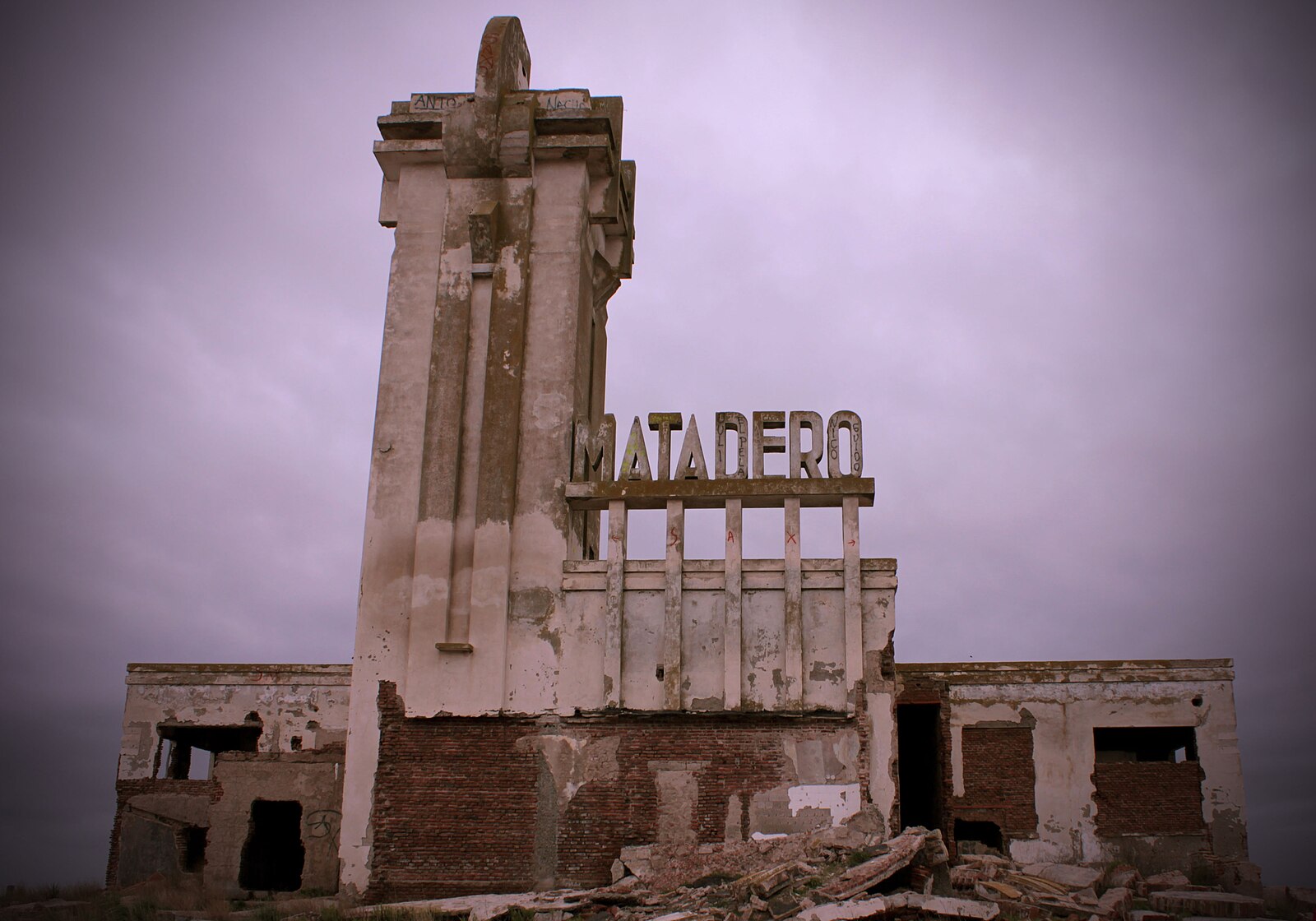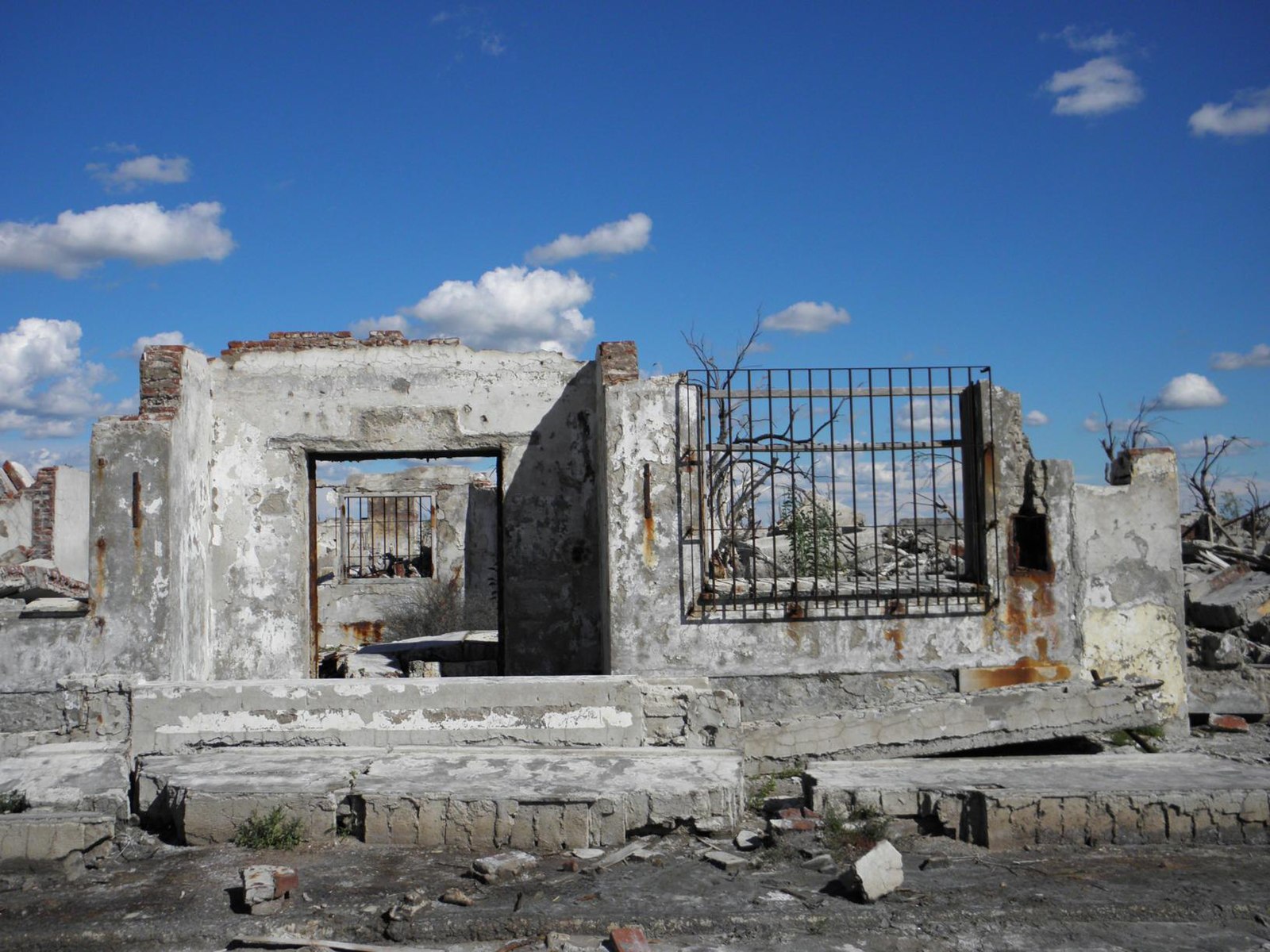Noeliamarchiani, Matadero de Villa Epecuén, CC BY-SA 3.0
Villa Epecuén was a tourist village that was located in the Buenos Aires Province, Argentina. Now abandoned, its ruins are found on the eastern shore of the Laguna Epecuén, about 7 kilometres (4.3 mi) north of the city of Carhué.
Villa Epecuén was founded in the early 1920s and quickly became a popular tourist destination. It was famed for its Lake Epecuén, whose waters contained a higher salt concentration than the Dead Sea, reputed for their therapeutic properties. Thousands of visitors flocked to the town annually, drawn by the promise of healing and relaxation in its saltwater baths and spas.
Epecuén was accessible from Buenos Aires by train. The Ferrocarril Sarmiento line served the Villa Epecuén station, while the Midland Railway and the Southern Railway carried passengers to nearby Carhué station.
Horacio_Fernandez, Ex Villa Turistica de Epecuén. – panoramio (1), CC BY 3.0
Tourism was well developed in Epecuén, as vacationers from Buenos Aires would seek the therapeutic salty waters of Lago Epecuén. At its height, Villa Epecuén had the capacity to accommodate 5,000 visitors, while unofficial accommodations allowed for 2000 more.
On 6 November 1985, a seiche caused by a rare weather pattern broke a nearby dam first, then the dike protecting the town. Rapidly made uninhabitable, the town saw the waters rise progressively, reaching up to 10 metres (33 ft) at its maximum. The village was never rebuilt.
At the time of the catastrophe, there were up to 280 businesses in Epecuén, including lodges, guesthouses, hotels, and businesses that 25,000 tourists visited between November and March, from the 1950s to the 1970s.
The town reached a population of 1,500 inhabitants at its peak.
In 2009, a gradual change began. The water started to recede, revealing the eerie ruins of the submerged town. What emerged was a ghostly landscape:
- Skeletal Remains: Buildings, trees, and structures lay in ruins, their exteriors eroded and covered in a layer of salt, creating a stark, white landscape.
- Silent Streets: The town’s street grid, along with the remains of cars, furniture, and personal belongings, emerged, offering a poignant glimpse into the lives disrupted by the flood.
The town now has a sole resident, Pablo Novak, who returned to his home when the waters receded after covering the town for 25 years.
Marinka1946, Ruinas de Epecuèn Pcia Buenos Aires, CC BY-SA 3.0
Villa Epecuén Today: A Tourist Attraction
Remarkably, Villa Epecuén has found a second life as a tourist destination, attracting visitors from around the world, drawn to its haunting beauty and tragic history.
The Lure of the Ruins
- Photographers’ Paradise: The surreal landscape provides a unique backdrop for photographers and filmmakers.
- Symbol of Resilience: The town stands as a symbol of resilience in the face of natural disaster, drawing visitors who come to pay homage to its history.
The Legacy of Villa Epecuén
The story of Villa Epecuén is a poignant reminder of the transient nature of human endeavors and the formidable power of the natural world. It teaches us resilience, the importance of memory, and the enduring spirit of a community that once thrived against the backdrop of a unique natural wonder. Today, the ruins of Villa Epecuén stand not just as a site of loss, but as a destination of reflection, inspiration, and awe-inspiring beauty.



